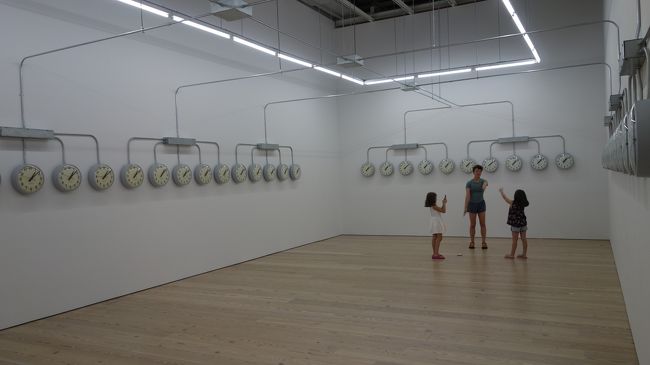
2019/08/22 - 2019/08/22
5184位(同エリア8661件中)
![]()
nomonomoさん
- nomonomoさんTOP
- 旅行記4914冊
- クチコミ8784件
- Q&A回答332件
- 5,822,765アクセス
- フォロワー101人
この旅行記のスケジュール
2019/08/22
この旅行記スケジュールを元に
Whitney Museum of American Art はその名のとおり,アメリカ現代芸術の美術館です。シリアスなものもありますが,愉快なものもあり,とても楽しい美術館です。
- 旅行の満足度
- 4.5
- 観光
- 4.5
- 交通
- 4.0
- 交通手段
- 鉄道 徒歩
- 旅行の手配内容
- 個別手配
PR
-
1階入口。
-
シニア割引がききます。
-
まずはエレベータで上のほうへ。ハドソン川が見えます。
-
最初の部屋。
-
現代アメリカです。
-
美術館の説明。
The Whitney Museum of American Art was established in 1930 by Gertrude Vanderbilt Whitney, a sculptor and patron, to champion the work of living American artists. In the early twentieth century, museums and collectors in the United States were skeptical of modern art and still privileged works by European artists. Mrs. Whitney's seismic contribution was to recognize both the importance of contemporary American art and the need for supporting the overlooked artists who made it. She created a gathering place for the artistic community in New York, and regularly exhibited and acquired work by emerging artists. The collection Mrs. Whitney assembled with the Museum's first director, Juliana Force, was art historically rigorous and vibrantly idiosyncratic. It embraced disparate approaches and foregrounded how artists uniquely reveal the complexity and beauty of American life. In a statement that coincided with the opening of the Whitney Museum, curator Hermon More made the spirited claim: "We look to the artist to lead the way."
This exhibition begins with selections from the Whitney Museum's founding collection and then examines (largely chronologically) major movements and genres, as well as key achievements by individual figures such as Georgia O'Keeffe and Jacob Lawrence. Icons of the collection are featured in galleries dedicated respectively to Calder's Circus and the work of Edward Hopper. More recent acquisitions are on view as well, including Norman Lewis's American Totem (1960), a painting made at the height of the civil rights movement by an underappreciated protagonist in the story of Abstract Expressionism. Such additions demonstrate that the Whitney's collection is a dynamic cultural resource that allows us to continually reframe American history and artistic production. The artists whose works are presented here met war and peace, economic collapse and recovery, new technologies, and social discord and progress with a range of responses. In keeping with its mission and ideals, the Whitney Museum continues to look to artists?of the past and of today?to lead us forward. -
現代絵画です。
-
現代ですね。ルネサンス時代にはこんな絵はありえません。
-
これも現代。
-
In 1942 Andrew Wyeth found a dead crow near his home in Chadds Ford, Pennsylvania, and brought it to his studio to sketch. He later painted the bird as if it were still lying in a winter field, an evocative choice given the mounting casualties in the war then convulsing Europe. Landscapes have always expressed an artist's association with a particular place, but they can also signal personal and national narratives. This gallery presents works that complicate our understanding of the natural world and how artists employ nature to explore human emotions, myths, fantasies, and politics. While some artists represented here paid homage to beloved sites with both invention and fidelity?as Marsden Hartley did with Maine?others, like Horace Pippin in The Buffalo Hunt (1933), crafted depictions of the natural world that fuse memories with images from popular culture, in his work a mythic American West. Other artists found something both visceral and abstract in nature, opening a space for a viewer's own experience. Georgia O'Keeffe, whose work is the focus of this gallery, looked to nature and its infinite details to enumerate the complexities of the self and the precariousness of both bodies and landscapes.
-
One of the most celebrated artists of the twentieth century, Edward Hopper was born in Nyack, New York, in 1882. He studied at the New York School of Art and then worked as a commercial illustrator before fully embarking on his painting practice in the early 1920s. Hopper is known as a quintessential American realist, but his paintings of street scenes, buildings, and interiors are enigmatic. His unconventional views and compositions frequently suggest an open-ended narrative, less descriptive of a place than suggestive of a mood or sensibility. The almost cinematic quality of his work is emphasized by simplified forms, deceptively placid painterly surfaces, dramatic light, and studiously constructed settings. Hopper's images often combined memories of a site with imaginary details. He once said of his work: "If you could say it in words there would be no reason to paint."
Hopper's long relationship with the Whitney began in 1920, when the then unknown artist received his first-ever solo exhibition at the Whitney Studio Club, the precursor to what would become the Museum. Early Sunday Morning, which Juliana Force and Gertrude Vanderbilt Whitney purchased in 1930, was a centerpiece of the Whitney Museum's inaugural exhibition and immediately became an icon of the collection. -
-
-
-
-
-
-
-
-
Edward Hopper b.1882; Nyack, NY d. 1967; New York, NY
Early Sunday Morning, 1930 Oil on canvas
Purchase with funds from Gertrude Vanderbilt Whitney 31.426
Although Hopper described Early Sunday Morning as "almost a literal translation of Seventh Avenue," the painting actually removes many of the street's particulars, leaving it difficult to identify as the New York thoroughfare. The lettering in the signs is illegible, architectural ornament is loosely sketched, and human presence is merely suggested by the variously arranged curtains differentiating apartments. The long early morning shadows in the painting could never appear on Seventh Avenue, which runs north-south. Yet these very contrasts of light and shadow, coupled with the composition's series of verticals and horizontals, create the charged, almost theatrical atmosphere of an empty street at the beginning of the day. This could be any Main Street in the country, and the uncanny sense of disquietude Hopper distilled here and in other paintings has come to be identified as part of the collective American psyche. -
-
-
-
-
-
-
-
-
-
Elvis
-
アメリカ。
-
-
-
-
-
-
-
-
-
-
-
-
-
-
-
-
-
-
-
-
-
Art in America
March 2008
I went to a wedding at a nudist colony.
It was the best...
と読めますか。 -
Bauhaus
...Openings
...Graphucs
Plus new after...
January 1100
と読めますか。 -
Elizabeth
Murray
Oscar
Bluemner
Cristin
Iglemner
Grant
Woo
と読めますか。 -
Art in America
Internat(ional)
Kamroo ZAram
Michael Borre
Martin Kippensem
Stevem Queen
Shepard Fairey
と読めますか。 -
-
今晩,何があるのでしょうか。楽しみですね。
-
-
-
-
-
屋外の展示。
-
-
-
-
-
これは私が撮った写真です。
-
-
-
-
ここからまた作品。
-
-
-
これは私の写真。
-
ハドソン川。
-
向こうはニュージャージー。
-
また作品。
-
-
-
リオデジャネイロ。
-
-
-
-
From left to right:
Christine Sun Kim
Degrees of Deaf Rage in Everyday Situations, 2018
Degrees of Institutional Deaf Rage, 2018
Degrees of Deaf Rage While Traveling, 2018
Degrees of Deaf Rage within Educational Settings, 2018
Degrees of Deaf Rage Concerning Interpreters (terps), 2018
Degrees of My Deaf Rage in the Art World, 2018
Charcoal and oil pastel on paper
Collection of Du Yan
Christine Sun Kim
Born 1980 in Orange County, CA; lives in Berlin, Germany
In this group of charcoal drawings Christine Sun Kim represents different degrees of what she calls "Deaf rage" with hand-drawn charts that graph scenarios privileging the needs of hearing individuals. Outwardly these measurements appear objective, but Kim undercuts their authority with strikethroughs, smudges, and sly puns. Charting frustrations in everyday and art-world environments alike, the images invite viewers to engage on an informal, personal level with specific aspects of Deaf culture?a term that has been used to make visible the social values, histories, and art that share sign language as a connector. Kim first showed these works in an exhibition she titled With a Capital D, pointing to the distinction of this culture from physical deafness. -
Degrees of Deaf Rage in Everyday Situations, 2018
-
Degrees of Deaf Rage While Traveling, 2018
-
Degrees of Deaf Rage Concerning Interpreters (terps), 2018
-
Degrees of My Deaf Rage in the Art World, 2018
-
-
-
-
Agustina Woodgate
National Times, 2016/2019
Clocks, hardware, and sanding twigs
Collection of the artist; courtesy Spinello Projects. Miami
Agustina Woodgate
Born 1981 in Buenos Aires, Argentina; lives in Miami, FL. and Amsterdam, the Netherlands
National Times is a closed-circuit network of clocks synchronized directly by the power grid. Since the Industrial Revolution, schools, factories, hospitals, and offices have used this kind of network architecture? referred to as a "master/slave" configuration?to keep consistent time. A single digital master clock sends power signals to a series of analog slave clocks, commanding synchronized measure across an entire institution. The master keeps steady time based on a pulse transmitted directly from the local power grid, whose frequency is aligned with the atomic clock at the National Institute of Standards and Technology, which establishes official United States time.
Here the hands of the slave clocks have been outfitted with sandpaper. As National Times progresses, the minute hands of the slave clocks scrape away the numerals on their faces until they are completely erased. Conditioned by the current state of labor and power, the slave clocks progressively erode their functional value, collectively reclaiming autonomy in the process of disintegration. -
原子時計の現代は,'cynchronized directly by the power grid' の時代ではありませんが,それなりに面白い。GPSの時計の同期法をご存知ですか。この時計の同期法と一般相対論の適用がGPSの一番面白いところです。
-
今回,これが一番良かった。
-
-
-
ベラスケスのラス・メニーナスを思い出します。
-
-
-
Keegan Monaghan
Blue Door, 2019
Oil on canvas, with oak frame
Collection of the artist; courtesy James Fuentes Gallery, New York
Keegan Monaghan
Born 1986 in Evanston, IL; lives in Brooklyn, NY
With their tactile, heavily worked surfaces, glowing light sources, and emphasis on subjective points of view, these paintings by Keegan Monaghan channel aspects of Impressionist painting, but they are very much of today's image-centric world. Monaghan employs visual tricks to make small items appear disproportionately large, skewing our perspective. The enormously clunky telephone in the painting on view here, for example, appears within a tightly cropped space, dwarfing the chair behind it. Other paintings play with a sense of inclusion and exclusion, positioning the viewer as a voyeur peering on to a scene through a peephole or fence. It is not always clear in Monaghan's work whether the viewer is looking out or looking in, excluded or implicated. -
-
-
-
-
The 2019 Whitney Biennial is the severity ninth installment of the longest-running survey of recent American art. Often described as a snapshot of art in the United States, the Biennial brings together work by individuals and collectives in a broad array of mediums. Over the past year and a half - an undeniably intense and polarized time in this country - we made hundreds of studio visits. While we often encountered heightened emotions, they were directed toward thoughtful and productive experimentation, the re-envisioning of self and society, and political and aesthetic strategies for survival. Although much of the work presented here is steeped in sociopolitical concerns, the cumulative effect is open-ended and hopeful.
Key issues and approaches emerge across the exhibition: the mining of history as a means to reimagine the present or future; a profound consideration of race, gender, and equity; and explorations of the vulnerability of the body. Concerns for community appear in the content and social engagement of the work and also in the ways that the artists navigate the world. Many of the artists included emphasize the physicality of their materials, whether in sculptures assembled out of found objects, heavily worked paintings, or painstakingly detailed drawings. An emphasis on the artist's hand suggests a rejection of the digital and the related slick, packaged presentation of the self in favor of more individualized and idiosyncratic work.
While we were organizing this exhibition, broader debates in the public sphere surfaced at the Museum, which itself became the site and subject of protest, as it has been throughout its history. Fundamental to the Whitney's identity is its openness to dialogue, and the conversations that have occurred here and across the country became a productive lens through which to synthesize our own looking, thinking, and self-questioning. -Jane Panetta and Rujeko Hockley, co-curators
The Biennial spans the first, third, fifth, and sixth floors, as well as the outdoor galleries. The Biennial features film and performance programs; a complete schedule can be found at whitney.org/BiennialFilmPerformance. -
以上です。帰りがけのトイレを拝借しました。
-
お疲れ様でした。
ホイットニー美術館 博物館・美術館・ギャラリー
利用規約に違反している投稿は、報告する事ができます。
コメントを投稿する前に
十分に確認の上、ご投稿ください。 コメントの内容は攻撃的ではなく、相手の気持ちに寄り添ったものになっていますか?
サイト共通ガイドライン(利用上のお願い)報道機関・マスメディアの方へ 画像提供などに関するお問い合わせは、専用のお問い合わせフォームからお願いいたします。
nomonomoさんの関連旅行記
この旅行で行ったスポット
ニューヨーク(アメリカ) の旅行記
旅の計画・記録
マイルに交換できるフォートラベルポイントが貯まる
フォートラベルポイントって?

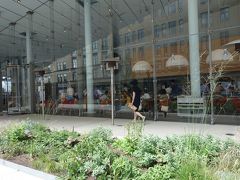















































































































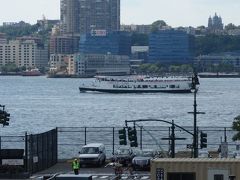
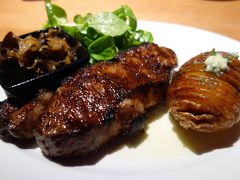

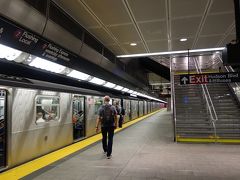
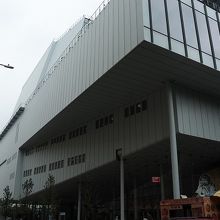



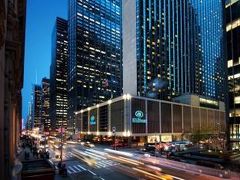





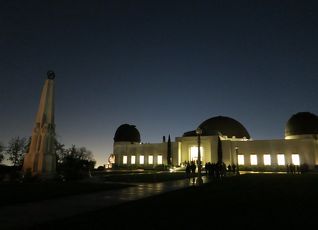


0
107